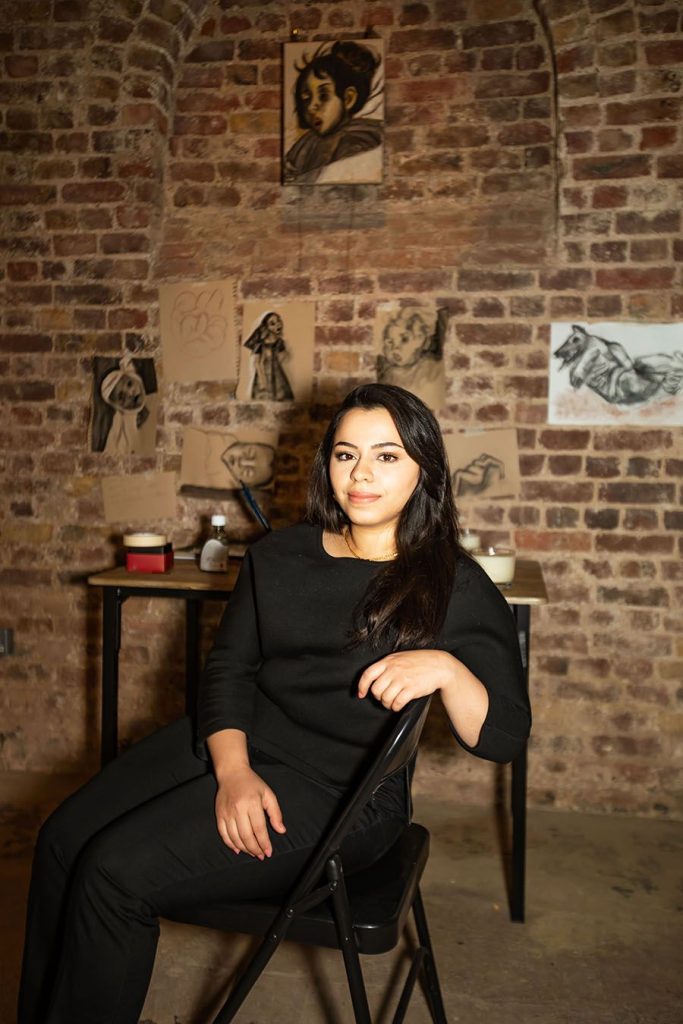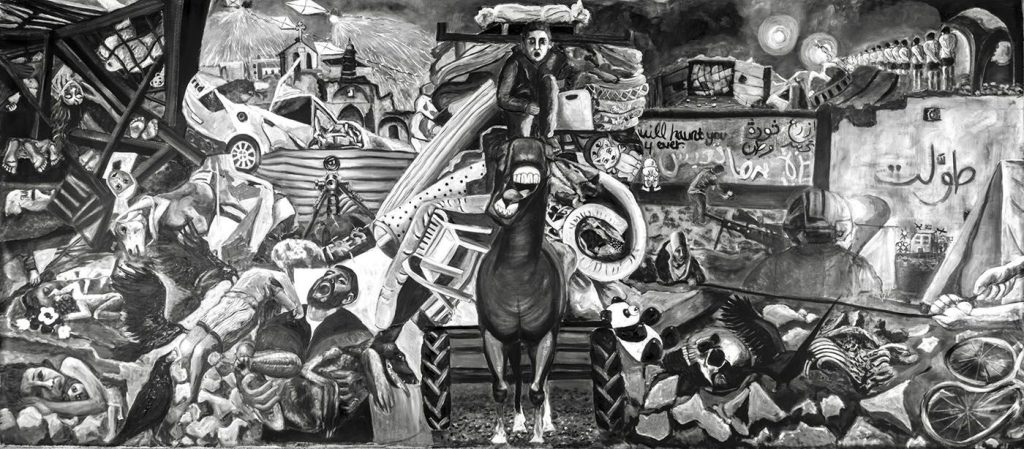Malak Mattar’s exhibition, Falasteen, is a message. Running from May 15 to May 18, 2025, at Central Saint Martins in London, it marks the first solo show by a Palestinian artist at the prestigious art school.
The timing is no coincidence: it opens on Nakba Day, a date that carries deep meaning for Palestinians around the world. Through her art, Mattar puts the reality of Gaza, past and present, into powerful, visual form.
Painting Through War: How Malak Mattar Found Her Voice in Gaza
Born in Gaza in 1999, Mattar turned to painting during the 2014 Israeli assault on the strip. What started as a way to cope quickly became a calling.
By her teens, she was already exhibiting internationally, almost 80 shows across the globe, and using her platform to speak about Palestine in a way that felt both personal and urgent.
She also wrote and illustrated a children’s book, Sitti’s Bird: A Gaza Story, which captures everyday moments of life under siege with warmth, strength, and honesty.


When the Colors Disappear: Art in the Aftermath of October 7
Mattar’s earlier work was known for its vibrant colors and bold figures, portraits of women, families, and life in Gaza full of resistance and spirit.
But after October 7, 2023, and the devastating assault that followed, her palette changed. Color gave way to black and white.
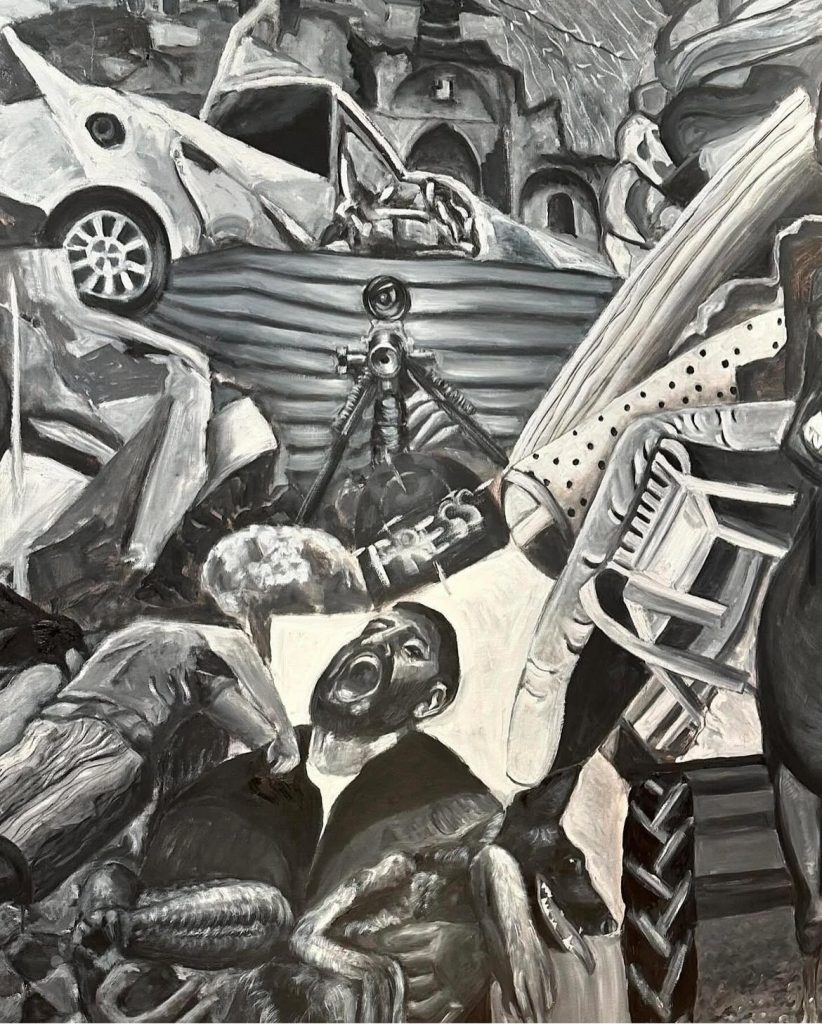

“No Words”: A Giant Canvas of Grief, Survival, and Memory
At 7 feet tall and 15 feet wide, No Words is Mattar’s largest work yet. Painted in black and white, the piece is raw and full of detail, ruins of homes, displaced families, memories layered in charcoal and ink. At its center: a horse-drawn cart, echoing the forced evacuations in Gaza.
Every inch of the canvas holds a story: school bags left behind, olive trees uprooted, women shielding children. It’s not just a painting. It’s a testimony.
No Words was born out of that silence and grief, when painting felt like the only way to say what couldn’t be spoken.
A Phoenix in Red: Finding Color After the Ceasefire
One of the centerpieces of Mattar’s Falasteen show is another massive canvas, featuring a red phoenix rising from the ruins of Gaza. Around it: locals, an olive tree painted in green, and echoes of survival.
For Mattar, this wasn’t just another painting. It marked a shift. “I felt able to use colour again because I began this work when we had that brief ceasefire earlier this year,” she said. The phoenix, a symbol of rebirth, is also the symbol of her muncipility.
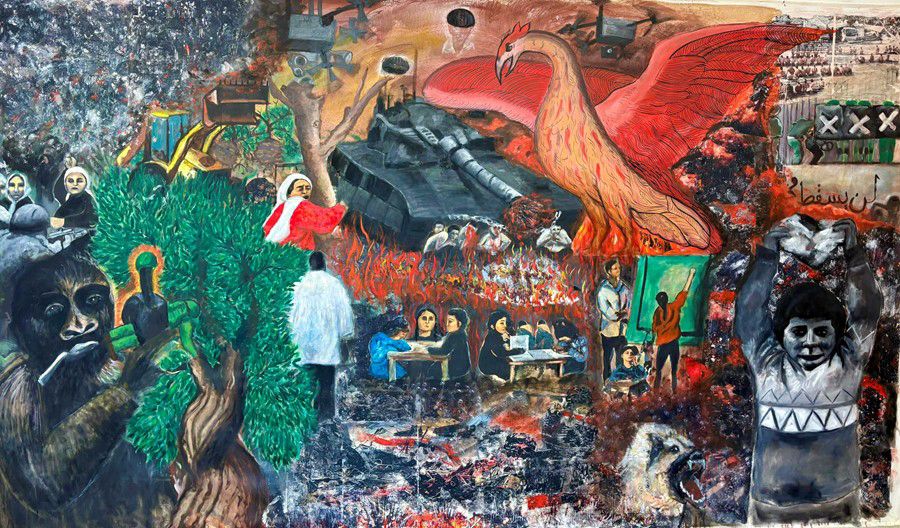

From Gaza to Global: The Artist Who Shared Her Work Before She Had a Studio
Mattar’s rise as an artist didn’t follow the traditional art-world path. She started by posting her work on social media during the war; no studio, no galleries, just emotion and a Wi-Fi connection. That raw honesty caught people’s attention.
By 14, her work had already reached Spain, Turkey, India, Costa Rica, and the U.S. She didn’t wait for permission to be seen; she made space for herself.
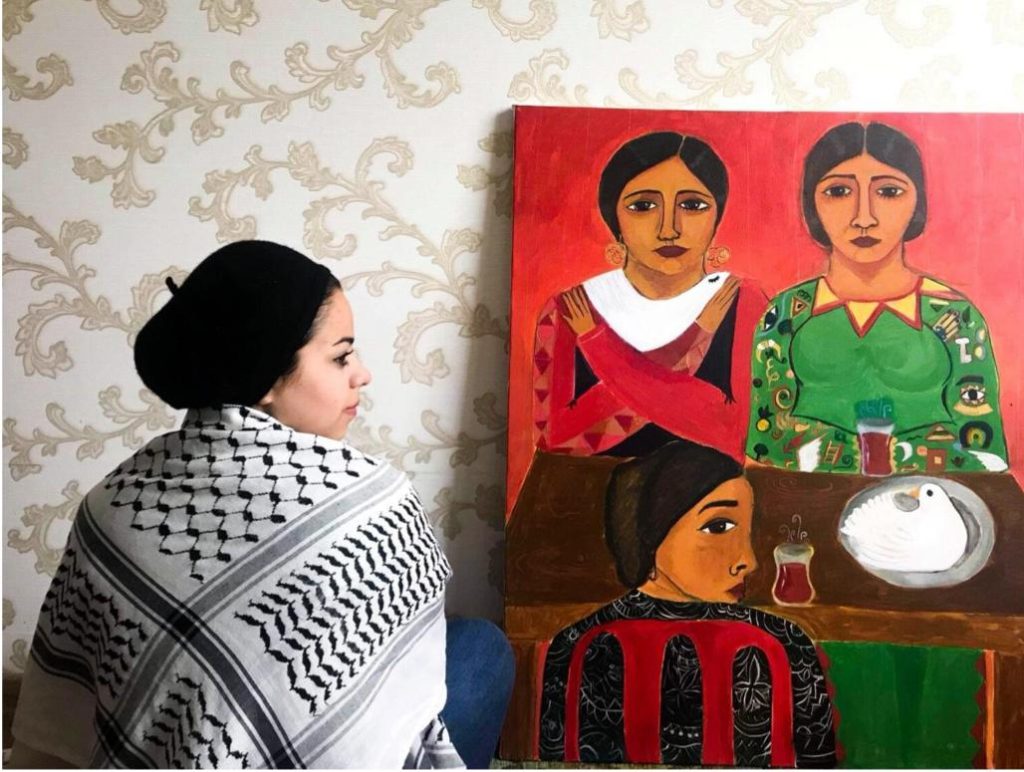

From Frida and Picasso to Her Own Signature Style
In her early days, Mattar found comfort in artists who understood pain, Picasso’s Guernica, Frida Kahlo’s intimate self-portraits. But she wasn’t content to imitate. She turned to YouTube tutorials to teach herself everything from brushstroke techniques to color theory.
Over time, her work developed its own rhythm: strong, stylized figures with deep gazes and recurring symbols of Palestinian life, fish, birds, olive trees, and veils.
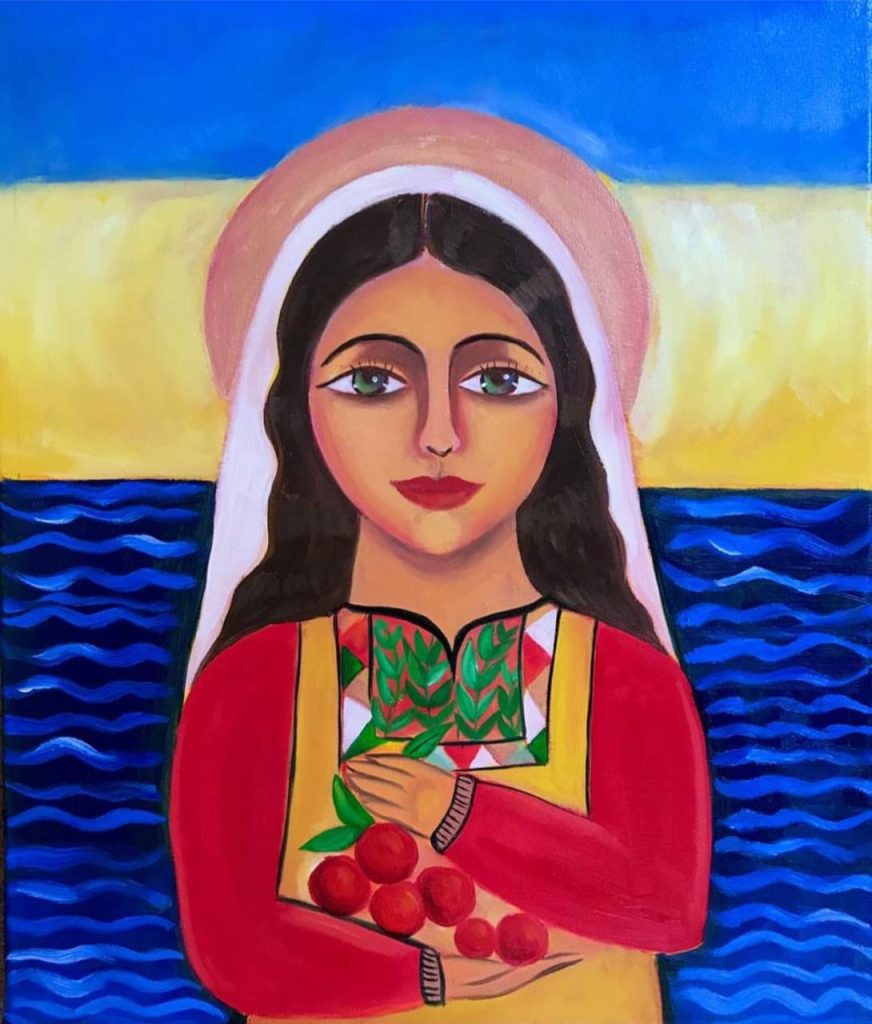

Why “Falasteen” Matters Right Now
This isn’t just an art show, it’s a cultural moment. At a time when Palestinian voices are being censored or erased, Mattar’s show stands as a bold refusal to be silent. Her pieces carry that urgency. They’re not just about what’s been lost, they’re about what’s still alive.
WE SAID THIS: Don’t Miss…Inside The ‘Eyes of Gaza’: An Exclusive Interview With Plestia Alaqad


